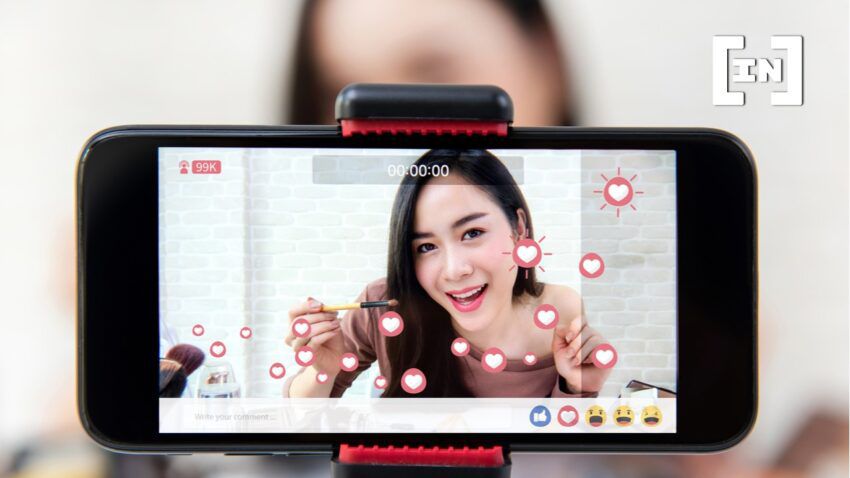Branding on Web3 is all about building a community, says Brent Annells, CMO of Smart Token Labs. Here are some community-building success stories.
In the early days of the Internet, brands could get away with a one-size-fits-all marketing approach. But as the web has evolved, so too has the way consumers interact with brands.
Branding in 2022
Nowadays, consumers expect brands to be more than just purveyors of products or services. They want to align themselves with brands that they can believe in and that reflect their own values.
This is where community comes in.
Community is a cornerstone of Web3. It’s more than marketing. It’s bigger than branding. Community in Web3 is a mix of many factors, but at its core, it revolves around decentralized ownership, governance, and incentives, made possible by new technologies and modes of participation.
O2, T-Mobile, and Telstra: Pioneers in Community Participation
Take the telco industry, for example. For the past 20 years, some of the best community-led brand initiatives have come from this industry. From customer co-creation to open-source development, telcos have shown that they are willing to engage with their customers in new and innovative ways.
One of the key things that sets Web3 apart from previous iterations of the web is the way it enables communities to form and participate in governance. This is something that telcos have been doing for years.
O2, T-Mobile, and Telstra are all examples of companies that have allowed their customers to participate in governance processes. In doing so, they’ve not only built brand loyalty, but they’ve also generated a wealth of customer insights that they otherwise would not have had access to. Of course, they’ve done so prior to what we now call “Web3.”
However, the principles that they’ve employed – decentralized ownership, customer participation, and openness – are all hallmarks of Web3. And as we move into this new era of the web, we can learn from these telcos to improve the way we build community around our brands.
The O2 Stadium
With over 30 million subscribers, O2 is the UK’s largest telco. In 2007, the company took a gamble and purchased the naming rights to the Millennium Dome in London. The stadium, which was originally built for an exhibition celebrating the beginning of the third millennium, had been struggling to find ongoing use.
In partnership with millions of O2 customers, the company brought the stadium back to life with music, festivals, and sports events. O2 customers were given priority ticketing and access to a free Pie and Pint at each event. This program proved to be a huge success, and by the end of 2008, the ROI was 26:1.
Not only did the program have a positive impact on O2‘s business, but it also revitalized a community asset. The O2 Stadium became a place for people to come together and enjoy shared experiences. It was, and continues to be, a success story for both the brand and the community.
While the O2 Stadium is a great example of community-building, there are ways that Web3 can improve upon it. One way is by decentralizing decision-making to the community served by the O2. As a community asset, it only makes sense that governance and treasury should be controlled by O2 customers. This would be a transformative step that would allow the community to have greater control over the direction of the brand.
O2‘s case study offers insights for Web3, as well. Most importantly, it shows that big bets can pay off – but only if there is a clear path to scaled reach. In order for community-building initiatives to be successful in Web3, they need to have a way to reach a large number of people.
T-Mobile Flash Mobs
America’s second-largest wireless carrier, T-Mobile, also has a long history of successful community involvement. In 2009, the company launched its “Life’s for Sharing” campaign, which featured a series of flash mobs in public places. These flash mobs were not only a fun way to engage with customers, but they also generated a significant amount of earned media coverage.
The first “Dance” event was held at Liverpool Station and was followed by “Arrivals” at Heathrow Airport. T-Mobile didn’t just share content – they were featured in the ads and took part in the stunts. They even co-created their own ads and joined in celebrity collaborations.
For three years, T-Mobile made and co-created content with thousands of their own customers. This content reached tens of millions of people and led to a 52% increase in sales. The company’s successful use of community participation set the benchmark for earned reach through virality.
Again, there are ways that Web3 can improve upon this model. One way is by using NFTs (non-fungible tokens) to collect and share moments from these events. NFTs are a perfect way to capture and verify these collector’s items. They can also be used to grant rights to co-create content, which would further empower the community.
T-Mobile’s case study offers several lessons for Web3, as well. First, it shows that creativity is key. If you want to inspire organic participation at scale, you need to be creative. But it’s also important to remember that not every idea is a winner. Sometimes, the best course of action is to focus on smaller, more achievable goals.
Branding and Telstra: Crowd Support
Telstra, Australia’s largest telecommunications company, is another pioneer in community involvement. In 2011, the company launched Telstra CrowdSupport, one of the first examples of peer-to-peer customer support at scale.
CrowdSupport allowed Telstra customers to participate in live customer service support. This decentralized approach to customer service led to a reduction in the cost of customer service and a decrease in the volume of complaints filed with the Ombudsman.
While Telstra’s CrowdSupport is a great example of how Web3 can be used to improve business processes, there is still room for improvement. One way to further decentralize the system would be to use tokens to incentivize participation. This would create more trust and transparency within the community, as well as increase participation rates.
Branding Looking Forward (While Looking Back)
Community as a moat is a term that is used widely in Web3. While it’s true that community can be a powerful differentiator for Web3 projects, it’s important to remember that the power of community has been recognized for a long time. Brands have been using communities to build loyalty and drive business results for years.
Web3 presents an opportunity to take things to the next level. With new technologies and modes of participation, we can involve people in ways that were not previously possible. But as we look forward, let’s not forget to look back. The lessons of the past can teach us a lot about how best to shape our future.
About the Author

Brent Annells is the CMO of Smart Token Labs. Over ten years, he has worked with the world’s most innovative media and technology businesses. He has recently completed a Kernel fellowship into Web3 via KB4 and made full time shift into Web3 with Smart Token Labs.
Got something to say about branding or anything else? Write to us or join the discussion in our Telegram channel. You can also catch us on Tik Tok, Facebook, or Twitter.
Disclaimer
All the information contained on our website is published in good faith and for general information purposes only. Any action the reader takes upon the information found on our website is strictly at their own risk.


